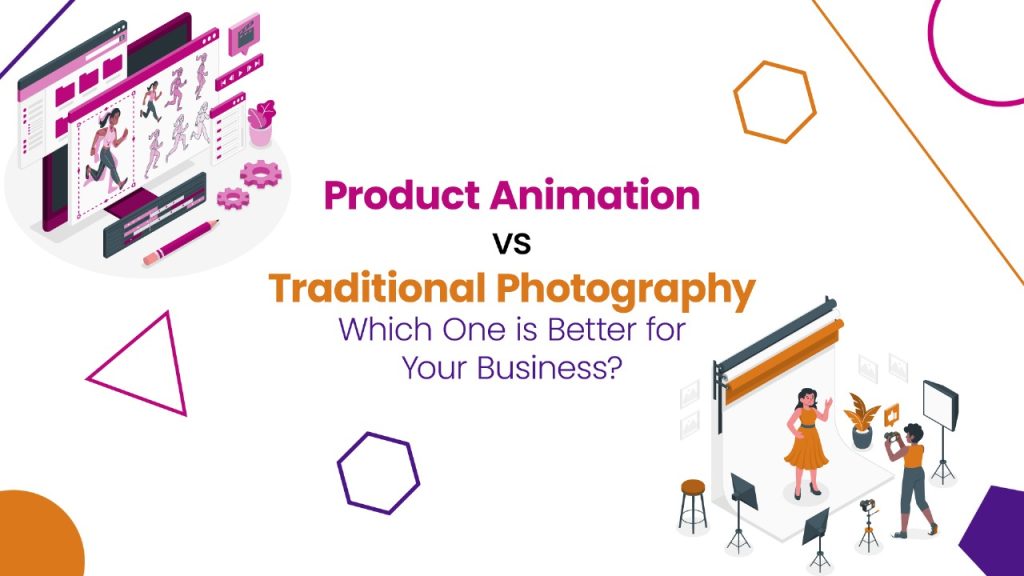Motion graphics and 3D animation are two giants that frequently come into the picture when it comes to producing visually appealing content. Although both are powerful, creative, and capable of bringing your projects to life, which is superior? That depends on what you want to achieve.
Motion graphics provide lively, streamlined images that are ideal for effectively communicating concepts. However, 3D animation delves into realistic, immersive environments that give stories a whole new level of life. Picking one seems like a challenge?
Advances in technology have made it possible for modern marketers to use 3D animation, motion graphics, and other digital tools to attract clients and build relationships with them. Both types of animation have artistic pursuits, and each one has its particularities.
We have explained everything about motion graphics vs. 3D animation in detail to help you decide which is best for your business.
What is Motion Graphics?
Motion graphics assemble animated graphics (like characters) to convey specific information to the viewers and formally vary from animation containing abstract forms and typographies. It includes infographics, explainer videos, movies with subtitles, and advertisements.
What is 3D Animation?
3D animation is a graphic technique that uses motion to bring objects, characters, scenes, props, and more to life. Previously used in creating films, video games, and TV shows. Companies have now employed it to create informative materials that help to market their products or services.
Motion Graphics and 3D Animation – What’s the Difference?
The decision to choose either motion graphics or 3D Animation is often a creative one, though the need for both must be considered. Although the visual styles of motion graphics and 3D animation are different, there are plenty of variances between these two in terms of timeline, budget, and target audience. The objectives of animation will dictate which term you use.
Continue reading more about Motion Graphics vs. 3D Animation and its uses.
3D Animation
3D Animation is a sequence of pictures in which objects can be seen in motion. Animators can create imaginary environments, moving things around and putting them where they appear. This process is called 3D animation and allows the viewer to see objects from different angles. It is a four-stage process that begins with modeling an object, placing it in a virtual layout, animating it, and then rendering the completed animation.
Creating a model can be done in two different ways–using a modeling tool or real-world scanning objects. Both methods are handy and offer various benefits. Making a model entirely on your own gives you much more control over the entire look using a modeling tool. While scanning natural world objects into the computer ultimately saves much time. Once the objects are scanned, textures make models more lifelike and give them some personality.
Based on the models, we can create a variety of scenes through a process called layout and animation. We set up the stage in layout and indicate where the characters will be placed. Then in animation, we animate the characters by assigning them variables that control how they move and react. However, modeling can also give life to the scene through motion capture or keyframing.
The final stage is rendering, in which the scene you’ve created is transformed into a finished piece. You can render your scenes realistic or with a particular art style. Either way, rendering depends on the project, its requirements, and your visual preference.
However, each stage of 3D animation demands that 3D artists spend a lot of time and effort in preparation.
Motion Graphics
Motion graphics are a great way to give life to static designs. Typical motion graphics are short, entertaining pieces of animation that initially illustrate data and other information. It helps to make any business performance more appealing and easier to understand and a great for conveying data and statistics and demonstrating your capabilities.
In motion graphics, the designers rely on physical tools to create layouts. Previously, they used rulers, markers, paint, and lithography to produce beautiful and spotless designs that can be replicated and distributed.
Now, they use digital tools to create designs more quickly, with more freedom to adjust those designs and add animation elements to the finalized product. For example, scores and title cards before a show or during a game are examples of motion graphics.
When to Use Motion Graphics and 3D Animation
There are different applications for motion graphics and 3D animation, so let’s learn about them in more detail.
Motion Graphics
Explaining Abstract Ideas: Motion graphics are a useful tool for simplifying and making difficult concepts easy to understand.
Data Visualization: Motion graphics are perfect for turning unstructured data into captivating visual representations.
Marketing and Branding: Motion graphics are great for showcasing product features, producing educational videos, or conveying brand messaging.
Reduced Cost and Faster Turnaround: Motion graphics provide an economical and speedy alternative if you’re on a limited budget or require a rapid fix.
3D Animation
Cinematic Storytelling: 3D animation is the best option if you want to create emotional, narrative-driven videos with realistic characters and settings.
Product Demos: 3D animation is excellent for showcasing things from all sides or meticulously modeling their functionality.
Visual Effects: 3D animation is frequently necessary if your project calls for complex visual effects or immersive settings.
Wrap Up!
There is a substantial connection between motion graphics and 3D Animation. Although mentioned before, the entire debate is a matter of minor variances between related terms. No matter the type of Animation you choose, 3D Animation, motion graphics, or any other form, the result should tell your story and appeal to the consumer.
Consequently, there isn’t any way to achieve the goal, but a compelling video should always accomplish its intended purpose.If you need a professional 3D animation design or motion graphic video, check out Anideos portfolio.











